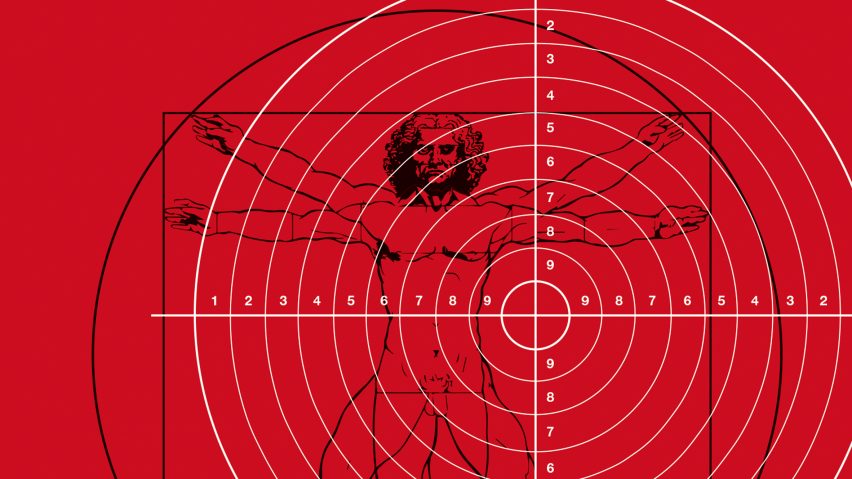
Trump’s border wall "will be the aesthetic legacy of a dictator"
The fall of the Berlin Wall marked the start of a global rush to create physical barriers, according to a new book illustrating how tyrants use architecture and design to control populations.
Theo Deutinger's Handbook of Tyranny covers nationalism, terrorism, and the power of multinationals in a globalised economy in a compendium of technical drawings and essays on the topic, published by Lars Müller.
An architect, writer and socio-cultural cartographer, Deutinger maps how the technological advancements since the end of the Iron Curtain in 1989 have lead to increased levels of tyranny around the world, rather than the hoped for "peaceful global future".

The 160-page book is broken down into chapters covering topics from bunker-busting missiles to refugee camps, crowd-control methods to capital-punishment devices, prison cells to anti-homeless benches.
Each chapter begins with an introductory text outlining the politics of the subject. Deutinger has also included two longer essays on the topics, a treatise on border control at the front, and an piece by American journalist Brendan McGetrick on the tyranny of manmade systems.
Designers should "work on making the world a better place"
In his chapter on walls and fences he examines the proliferation of militarised borders and the booming business of "smart walls" equipped with lasers, sensors, cameras and drone surveillance.
If US President Donald Trump’s wall with Mexico is ever built, Deutinger claims it will be "the aesthetic legacy of a dictator".
Prototypes for the wall, which is now estimated to cost $33 billion (£23 billion), have already been erected to test their defence capabilities. Architects and contractors have been obliged to defend their decision to pitch designs for the structure.
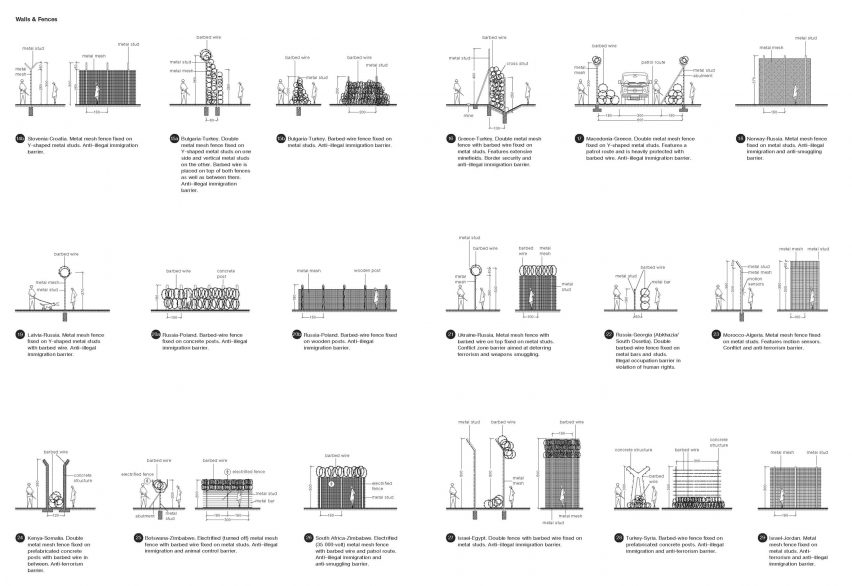
Speaking to Dezeen, Deutinger said that designers should promise to "contribute something good" to society and endeavour to make the world "a better place".
"This might sound cheesy but I think it is important to realise that," he said. "If one is asked to design the wall between two nation states or design an electric chair, the usage is undeniably clear. In any case, the designer has to keep the human cost of the design in mind."
Deutinger's drawings highlight the dark side of design
Deutinger was inspired to approach the subject via technical drawings by Ernst Neufert's Architects' Data, a reference book first published in 1936 that lays out the relative spatial requirements of 6,000 building types and related objects.
Handbook of Tyranny mirrors the format, but is filled with designs for the dark side of design so that it resembles an "unearthed compendium of blueprints drawn by or for a dictator of our time".
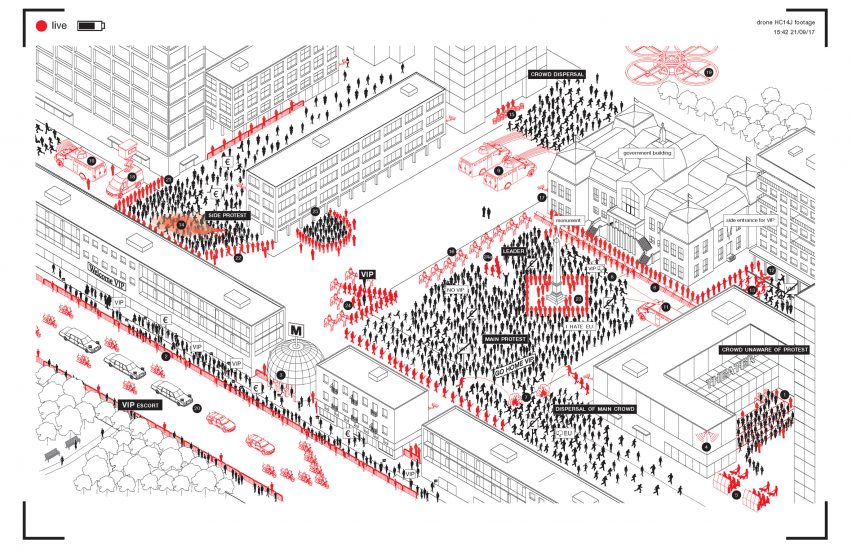
The book is equally critical of architects who design systems to corral human beings as the leaders who commission these violent technologies.
"Handbook of Tyranny is the attempt to lure architecture away from its desk top computer and confront it with its political dimension, by using its very lingua franca, the technical drawing," he said.
Functional drawings show the human impact of violent architecture
This is not the first project to try and confronting architects with the reality of their work for governments and powerful individuals. As part of the Venice Architecture Biennale 2016 a group of architects and academics created a room of "architectural evidence" room filled with full-size plaster casts of Nazi gas-chamber doors and hatches.
The casts were displayed next to architectural drawings signed by the designers of the highly efficient killing devices, to hit home the disconnect between the capable architect and the absent people their designs destroyed.
Deutinger includes people in his book, but only in vague sketches that help to model the scale of each despotic instrument.
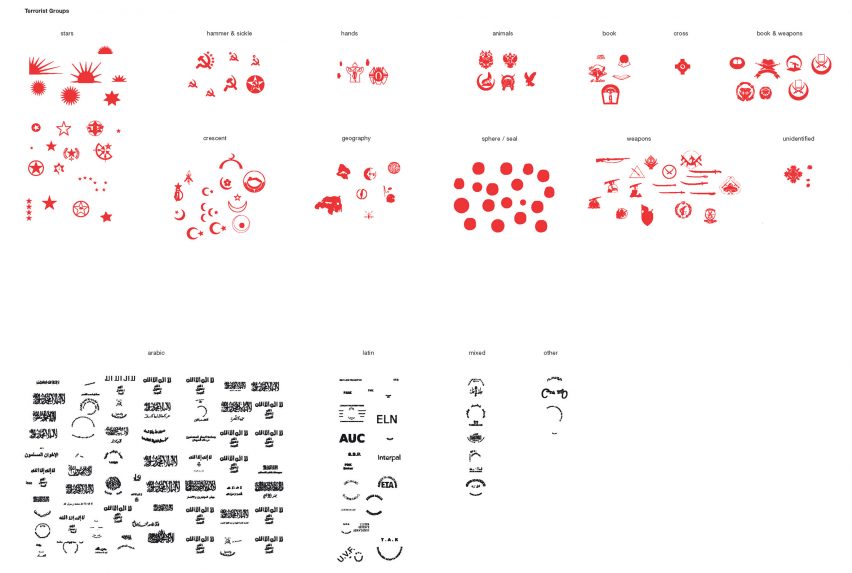
"By adding purely the outline of a human next to a drawing, one immediately and unconsciously understands that a wall is twice as high as a person or a ditch is three times deeper," he explained.
"There is not one line drawn too much and everything has its meaning and purpose, its pure function. This coldness and rationality of the technical drawing reinforces the content's brutality."
In The Tragedy of Territory essay, Deutinger examines how the interrelationship between humans, the land we inhabit and the technology we develop to control it has evolved into a system of governments that control the citizens within their national borders with the law, and their borders with visas.
Deutinger believes tech companies like Facebook have become too powerful
Territorial law, he argues, has now failed to keep up in the age of a globalised economy where multinational companies aren't contained by the laws of one country.
"The power of companies like Facebook is larger than that of some countries," he wrote. "It is no coincidence that Apple's European headquarters are in Ireland, Amazon's seat is in Luxembourg, and IKEA runs a dubious foundation in the Netherlands."
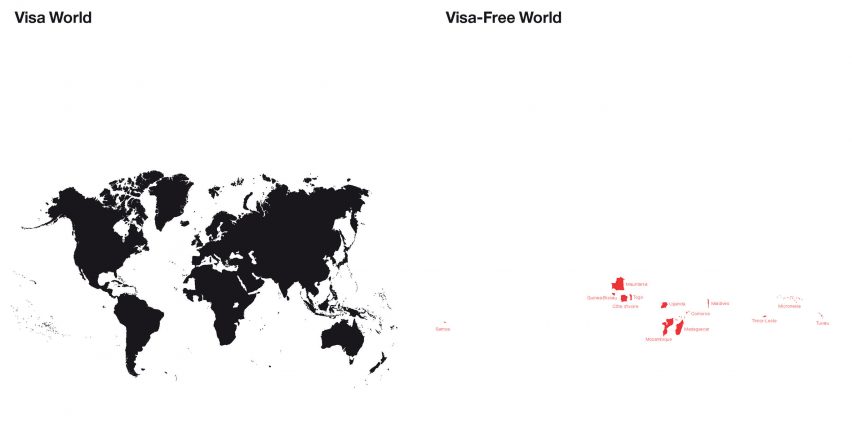
Understanding these nebulous, unequal, hierarchical systems that enable tyranny is central to combating it, MeGetrick argues in A Vast Conspiracy.
An anti-homelessness device called the Camden Bench is not simply a piece of public architecture that cunningly resists being used as anything but a seat, but a "small piece of a vast ecosystem of urban control".
By compiling architectural crimes against humanity, MeGetrick writes, "this handbook closes the escape routes often taken by architects, engineers and the rest of us to avoid responsibility for the tyrannical features of modern life".
The handbook is designed to help identify modern means of oppression
For the layman, Deutinger intends for the Handbook of Tyranny to act as graphic guide to identifying the means of their oppression, from the defences built in to the cities they live in to the freedoms afforded by the passports in their pockets.
"I hope that the book helps people and especially non-designers to rediscover the space around them and
question absurdities with which we are faced every day," he said.
"Today, the Handbook of Tyranny can be used as a document to refer to in heated discussions, in the future it will provide evidence for the insanity we have been living in."